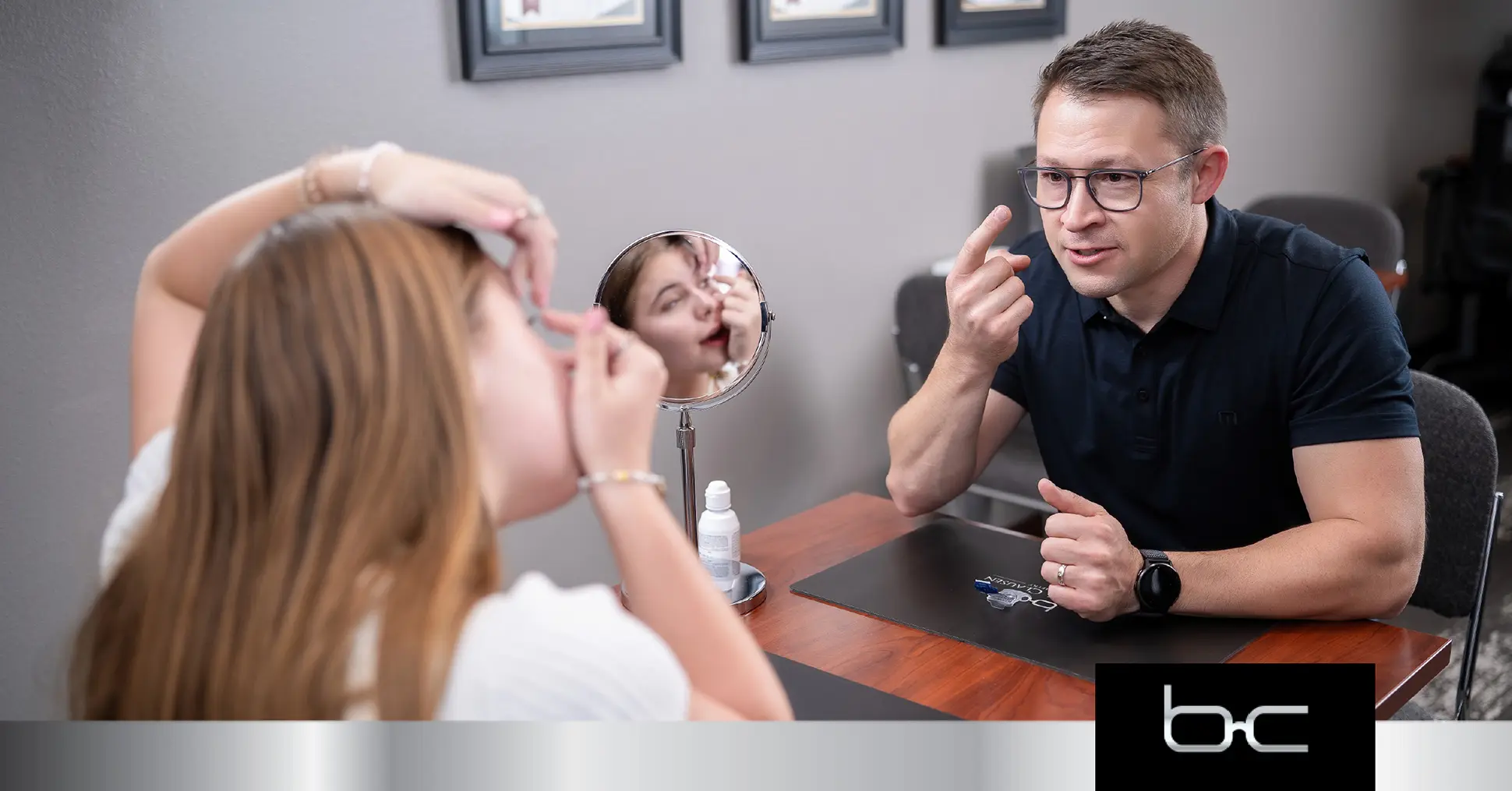If you’ve ever looked at your eyeglass or contact lens prescription and felt like it was written in code, you’re not alone. But once you understand what each number says about your eyes, those figures make a lot more sense.
Eyeglass Prescriptions
Eye doctors often use shorthand abbreviations on prescriptions when referencing your eyes: OD (oculus dexter, “right eye”), OS (oculus sinister, “left eye”) and OU (oculus uterque, “both eyes”). Most people have different prescriptions for each eye, though OU can be used if the same prescription applies to both eyes.
Eyeglass prescription readings may include up to three unique identifiers – sphere, cylinder and axis – that eye doctors determine as part of a comprehensive eye exam. Here’s what they mean:
- Sphere (labeled SPH) refers to the correction strength of your lenses, with a negative sign (-) for nearsightedness and a positive sign (+) for farsightedness. Sphere is listed in diopters – a unit of measurement that represents the optical strength of a lens – and the higher the number is, the stronger the lens.
- Cylinder (labeled CYL) is the amount of corrective power needed to compensate for an irregular cornea or lens, also known as astigmatism. Astigmatism happens when the cornea or the lens inside the eye has uneven curves. Rather than being evenly rounded like a ball, the surface is shaped more like an egg. This irregular shape causes vision to appear blurry at all distances. The value is measured in diopters – a unit of measurement indicating the lens’ ability to bend or focus light – and is typically paired with a negative sign (-); a cylinder value of 0.00 means that you do not have astigmatism.
- Axis goes together with cylinder, indicating the direction or orientation of the curve needed to correct astigmatism. It is always measured between 0 and 180 degrees; for example, a CYL of -1.00, Axis 90° signifies a vertical correction. If you do not have astigmatism, axis won’t apply to you.
You may also see a few other values in your prescription, including:
- Pupil distance (labeled PD), or the distance in millimeters between the centers of your pupils. Usually ranging between 55-70mm, this number tells opticians where to place the optical center of the lens to minimize vision issues.
- Add – or the additional lens strength needed for close-up tasks like reading. This is always a positive number.
- Prism and base, which are specifically for those with misaligned eyes, helping to correct double vision. Prism lenses bend light and help the eyes work together, with lens strength measured in prism diopters. Base refers to where the thickest part of the prism lens should be to best help vision and can be in one of four directions: in, out, up and down.
Contact Prescriptions
Prescriptions for contacts read similarly to eyeglasses, though with a couple of additional measurements only applicable to contact lenses.
In all, contact prescriptions can have up to five identifiers. Three measurements, including power (another name for sphere), cylinder and axis, are the same numbers you’d find on an eyeglass prescription. You can usually locate these numbers on the side of your contact box or on the front of the lens’s blister pack.
The two lens-specific identifiers to look for are:
- Base curve (labeled BC), which measures the curve of the inside of the lens in millimeters, typically ranging from 8.3-9.0mm.
- Diameter (labeled DIA), which measures the overall width of the lens in millimeters. Most lens diameters range from 13.8-14.5mm, with different sizes affecting how the lens sits on your eye and how comfortable it feels.
Together, the base curve and diameter determine how the lens fits on your eye.
A lens that’s too loose or too tight can affect not only your vision but also the health of the front surface of your eye. That’s why it’s so important to only wear contact lenses specifically prescribed for you, and not trying a friend’s just because they have a similar glasses prescription.
Have questions about your eye prescription?
If you’re curious if your eye prescription has changed, or if it’s time for your annual eye exam, schedule an appointment to see one of the doctors at Bauer & Clausen Optometry by calling (406) 656-8886. We look forward to seeing you soon.






